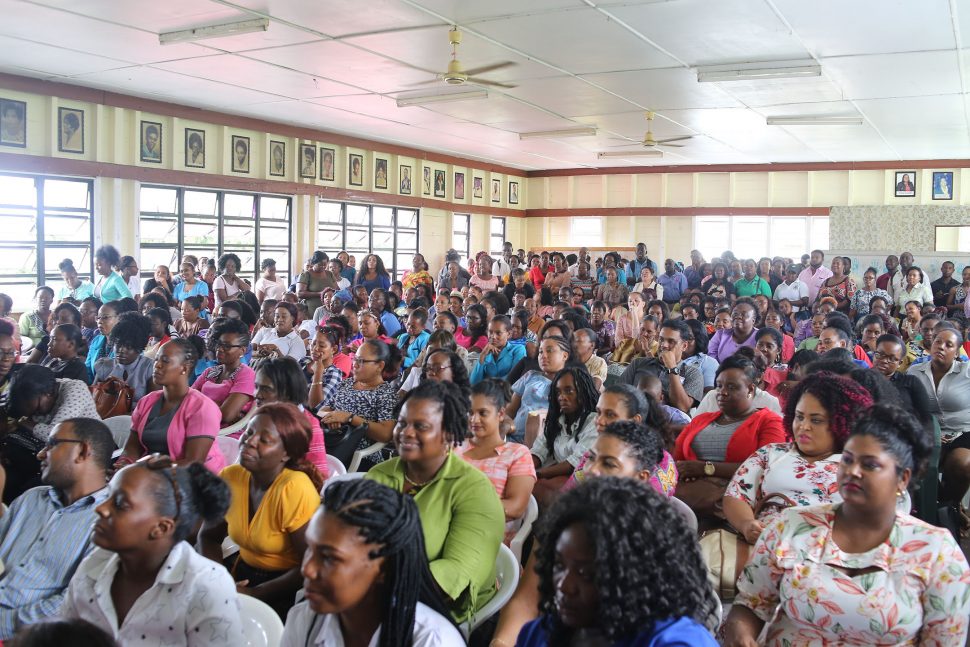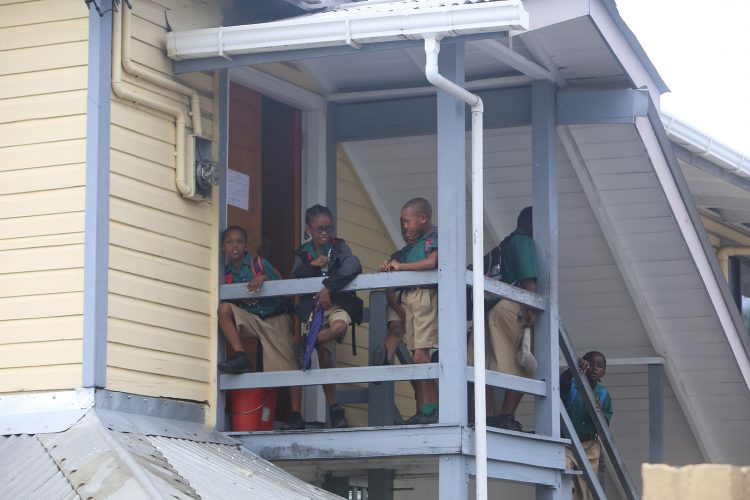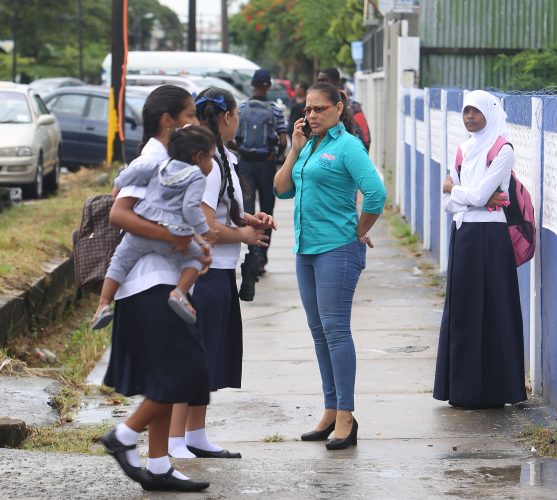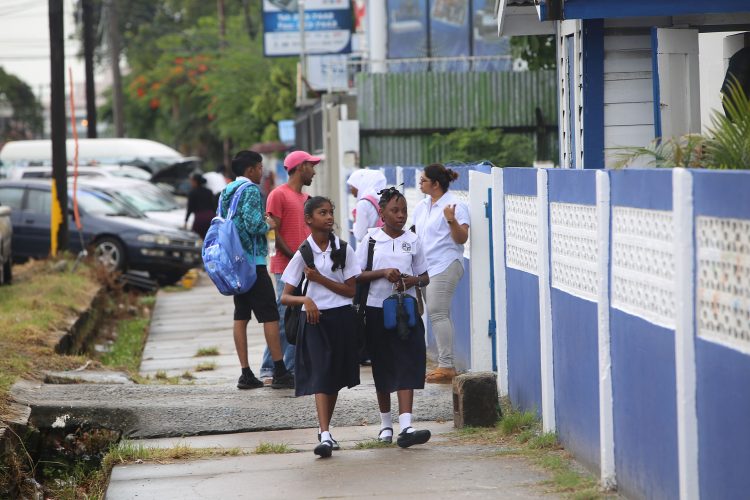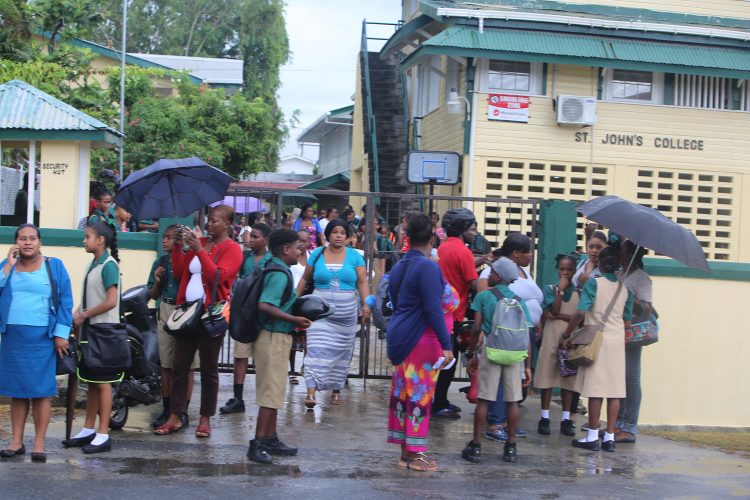With teachers around the country on strike, Minister of Education Nicolette Henry is actively engaged in attempting to hire “temporary” replacements to keep schools open.
“The ministry is recruiting temporary teachers at this time,” Henry told a press conference last evening, while adding that her officers have been in touch with applicants on file and asked the Teaching Service Commission to provide a list by region of those who had passed their recruitment process.
Henry said a total of 2,500 persons are available for temporary placement, inclusive of applicants on file, student teachers from the Cyril Potter College of Education, retired teachers and volunteers.
The strike yesterday by teachers was arguably the largest faced by the government since taking office in 2015 and poses a major problem for it.
Henry, who was supported yesterday by a panel of high ranking education officers including Chief Education Officer Marcel Hutson, remained firm in declaring that government will not forego “conciliation” and move forward with an arbitration panel as requested by the Guyana Teachers’ Union (GTU) to resolve the current deadlock in the negotiations over wages and non-salary benefits.
The union has repeatedly argued that the mandated conciliator—the Department of Labour—has compromised its position by sitting at the negotiation table and making pronouncements to the effect that the union should accept the government’s offer of a $700 million lump sum, which works out to an approximately 5% increase on 2017 salaries.
Most recently, Minister with responsibility for the Labour Department Keith Scott referred to striking teachers as uncaring and accused them of being willing to sacrifice the country’s children for money.
Henry was asked if she believed that Scott should apologise and responded that it was for him to decide.
She, however, maintained that despite his statements, the collective bargaining process must proceed as dictated by the collective agreement between the ministry and the union.
“Due process is required. You have to go stage by stage and exhaust each stage,” she stressed, before adding that both parties are awaiting a call from the Ministry of Social Protection (MoSP) to proceed with conciliation.
If the union agrees to continue with conciliation, it has been directed by the MoSP to call off the strike.
President David Granger has said that his government is looking at means to supplement the offer on the table.
Meanwhile, the Education Ministry and the GTU were split on the number of teachers who participated in the strike yesterday. According to the union, some 3,525 teachers proceeded on strike, while the ministry argues that the number was 1,065 although its numbers for Regions Five and Seven were unavailable.
The largest disparity exists in Education Districts Four, 10 and Georgetown. According to the ministry, a mere 34 teachers in District/Region Four participated in strike action. However, on-the-ground observations by Stabroek News show that the number was closer to the 400 claimed by the union. The ministry has claimed that in Georgetown, only 219 teachers participated in the strike but protests outside the Brickdam office of the Minister and a meeting at the GTU Headquarters suggested the number was much closer to the 700 claimed by the union. The ministry has further noted that 400 teachers were on strike in District 10, while the union claimed a high figure of 1,000.
Asked to provide information as to the actual percentage of staff strength in schools, the officials indicated that they were “unable” to do so.
The ministry has also argued that for the most part schools remained open. According to statistics provided for each district, no schools were closed in Region Two, which has 89 schools; Region Three, which has 124 schools; Region Four, which has 132 schools; and Region 8, which has 26 schools.
The ministry said that of the 72 schools in Region One, only five were closed; while of the 75 schools in Region Five, only two were closed; while in Region Six, which has 142 schools, only three were closed. For Region Seven, which has 35 schools, only one was closed, while in Region Nine, which has 83 schools, two were closed and in Region 10, which has 60 schools, 11 were closed.
In Georgetown, all 91 schools were opened according to the Ministry.
Stabroek News, however, observed that the absence of teachers in at least four Georgetown schools caused learners to be sent home and at least two Region Four schools were completely run by substitutes.
Members of last evening’s panel defined an open school as one where “all the doors are open and learners can access the classroom at any time during the contact periods.”
Henry specifically indicated that it is the Ministry’s “responsibility and duty to ensure that our children are in the classroom. We will have to continue to have our children in the classroom once school is in session.”
For Hutson, the situation is one which requires the support of the nation. He stressed that the student teachers who will be in the classrooms will be working under trying circumstances and deserved support. Asked if the student-teachers were given a choice about being in the classroom, Hutson said that they were.
